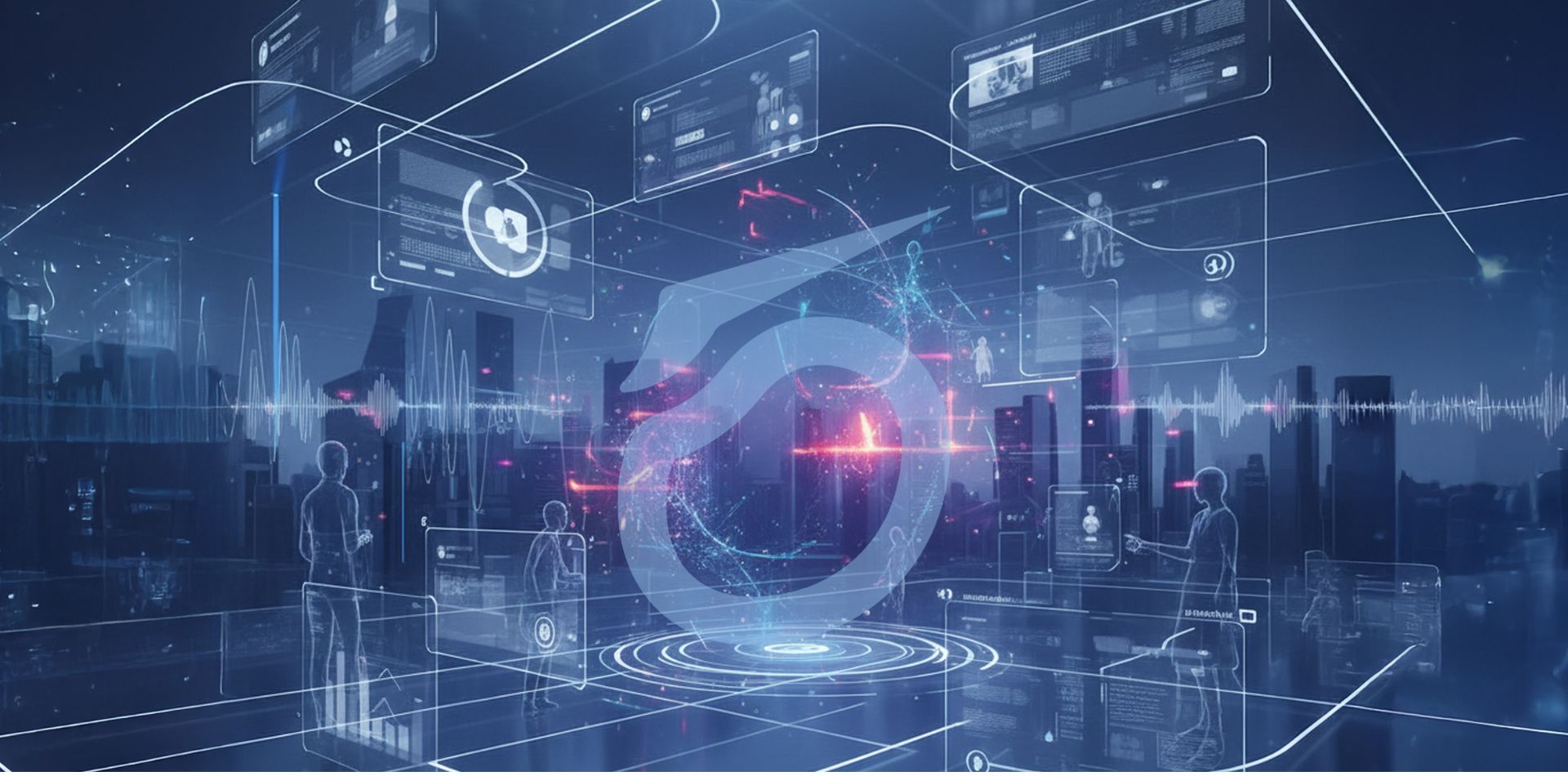
In 2026, your brand won’t just look beautiful, it will listen, move, and adapt.
Logos will shift with mood, packaging will respond to touch, and voice will become the new handshake of digital experience.
We’re entering an age where brand identity isn’t a static style guide — it’s a living system. At Optimist, we call this the era of Human + Intelligent Branding — where creativity meets cognition.
This article explores the four biggest forces reshaping branding in 2026 — AI, XR, Voice, and Motion — and how each will redefine differentiation, design, and human connection.
For decades, brand design meant defining a logo, a palette, a font.
In 2026, it means defining behavior.
Today’s audiences don’t merely observe brands — they interact with them. They expect empathy, context-awareness, and sensory engagement.
That shift is powered by four converging forces:
This convergence is transforming branding from visual consistency into experiential continuity — an ecosystem that moves with the user, not just around them.
From Tool to Collaborator
In 2026, AI stops being a plug-in and becomes a co-creator.
Generative models now assist strategists, copywriters, and designers — not to replace them, but to expand imagination.
Applications include:
Risks & Responsibilities:
Over-automation can erode originality. AI hallucinations can create inconsistency or even ethical conflicts.
Hence, the future belongs to “Human in the Loop” systems — where strategy defines direction and AI accelerates execution.
When guided with empathy and purpose, AI becomes not a threat to creativity — but its multiplier.
Imagine stepping into a brand instead of scrolling through it.
That’s XR (Extended Reality) — the combined field of AR, VR, and spatial computing that transforms brand presence into place.
What It Means for Brands
Design Implications
Brands now need spatial identities — depth, layering, and motion mapped across real-world coordinates. Typography floats, soundscapes react, light guides attention.
Barriers
High cost and technical literacy will slow universal adoption, but forward-looking brands are already experimenting. In India, real estate, automotive, and lifestyle sectors are leading the way — turning imagination into walk-through reality.
As voice assistants and smart speakers become default interfaces, sound becomes the new logo.
Why Voice Matters
Your brand’s tone — not typeface — will decide how trustworthy it feels.
Think of the difference between a polite assistant and a robotic one — that’s brand equity in audio form.
Key Applications
Ethics & Authenticity
Voice cloning and deepfakes blur truth and manipulation. 2026 will demand transparency and consent — because voice, more than visuals, carries trust.
Done right, sonic branding will turn every interaction into a sensory experience — emotional, not algorithmic.
We live in a moving world; your brand should move too.
Motion branding — the art of making identity systems kinetic — is now central to how audiences perceive modernity and sophistication.
What It Looks Like
Why It Matters
Motion grabs attention in the endless scroll, but beyond visibility, it conveys emotion.
A slow dissolve feels calm; a fast bounce feels playful. Each frame can reflect the brand’s psychology.
Technical Balance
Optimising for performance — loading speed, device adaptability, accessibility — remains key. The smartest identities of 2026 will be motion-first, yet light and inclusive.
How do you combine AI, XR, Voice, and Motion into one coherent ecosystem?
Through Strategic Modularity.
Key Principles:
Brands that integrate these pillars intelligently will achieve what we call “Adaptive Consistency” , a brand that evolves without losing itself.
The future glitters, but it’s not friction-free.
At Optimist, we believe innovation without empathy is noise. The brands that last will be those that fuse intelligence with integrity.
Here’s a glimpse of what’s already emerging on the horizon:
The takeaway? The brand manual of the future will read more like a performance script than a design guideline.
Branding in 2026 is not about predicting trends, it’s about designing adaptability.
AI will think faster. XR will feel deeper. Voice will sound truer. Motion will be expressed clearly.
But the soul of a brand will still be human.
At Optimist, we see the future not as automation, but augmentation, where creativity scales through technology, and every brand can find new ways to speak, move, and mean more.
So, as you plan your next rebrand or campaign, ask not “What should my brand look like?”
Ask, “How should my brand live, listen, and evolve?”
Because tomorrow’s brands won’t sit still, they’ll move with the world.